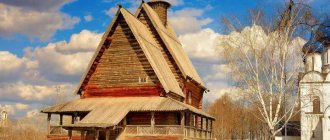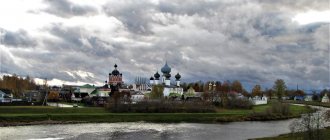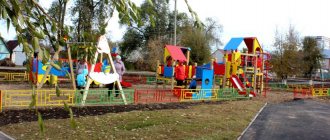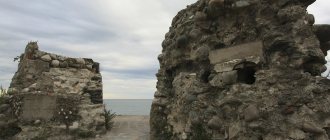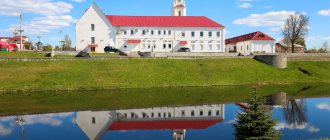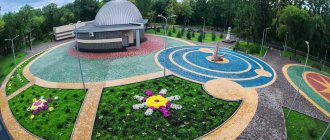| What to see on your own Museums Stories, routes and tips from tourists Where to go for 1 day Where to stay in Pyatigorsk Interesting excursions |
Pyatigorsk is the oldest balneological and mud resort, famous for its healing mineral waters. The hot mineral springs of Mount Mashuk were first explored at the end of the 18th century, and the city dates back to that time. Water treatment is complemented by the healing mud of Lake Tambukan , mountain air and a favorable climate.
To get to know the city, people usually come to Pyatigorsk for several days. During the standard two-week treatment period, resort guests have the opportunity to leisurely get acquainted with all the iconic objects of the resort. As a rule, vacationers from neighboring resort towns or business travelers who have taken a day off from official business come for one day.
Lermontov's house
It is best to start your independent exploration from the famous Lermontov house, which is located at the intersection of one of the oldest streets in the city - Karl Marx street with Lermontov street. This place is dear and memorable for everyone who loves and appreciates poetry, and simply for people who know and remember the history of their country. The house where the famous Russian poet spent the last days of his life
, from where he went to the place of his death for a duel with Martynov, and where his body was then brought, has survived to this day.
Now it is part of a museum reserve
that tells about Mikhail Lermontov, his last days of life, and the people around him during that period.
One of the buildings of the museum complex is the “ House of A.A. Alyabyev”
", the author of the famous "Nightingale", is located on the other diagonal of the block - at the intersection of Sobornaya and Buachidze streets, and is the final object of inspection of the Lermontov reserve. After which, to continue the route, we suggest going down Sobornaya Street.
Lermontov Square
Just a block away from the Alyabyev House, on the right, there is another Lermontov place in Pyatigorsk - a small park named after the poet, in which the very first monument to M.Yu. Lermontov in Russia was erected. It is symbolic that its author, sculptor A.M. Opekushin, was also the creator of the famous monument to Pushkin in Moscow.
Lermontov Square smoothly turns into L.N. Tolstoy Square
, which is divided into two parts
by Kirov Avenue
- the main historical street of the city. At the top of the square there is a monument to the writer,
and in the Lower Part there is a Flower Calendar and an original fairy-tale fountain “Gnomes”
.
Spassky Cathedral
Opposite the Upper Part of Tolstoy Square, stands the magnificent five-domed Spassky Cathedral
, recreated in 2012. This is a small copy of the Cathedral of Christ the Savior in Moscow. Now it is the current cathedral of the city. We pass by it and continue moving along Kirov Avenue to the left.
And almost immediately we find ourselves in A.S. Pushkin Square
with a bust of the poet installed there in 1982. This is a gift to the city from sculptor M.K. Anikushin. After the installation of the monument, a park was also organized near it.
So, practically at the same intersection of Pyatigorsk, the memory of the three greatest Russian writers
19th century.
Further, just a few steps after the Pushkin monument, in front of us stands a white and yellow building in a classical style with protruding columns. This is a former restaurant
, built in the late 20s of the 19th century. Pushkin, Lermontov, and L.N. Tolstoy visited this hotel building. Nowadays the Research Institute of Balneology and Physiotherapy is located here.
Park "Flower Garden"
And we move on, and finally, passing the Colonnade
, we find ourselves at the entrance to the famous “Flower Garden” park, where our educational tour will continue.
But before you enter the park, admire the light and openwork building to the right of the entrance. This is the former coffee shop of A.A. Gukasov
, a Pyatigorsk merchant, famous for her baked goods at the beginning of the 20th century. The style of construction is very unusual - both elements of modernism and oriental motifs are visible in it. Elongated balconies on the second floor with canopies, turrets and stucco moldings - everything gives the building a very fancy and unique look.
And finally, through the beautiful openwork gates we enter the territory of an amazing Pyatigorsk attraction - the Tsvetnik Park.
The park, which was once laid out here on the site of a swamp by Bernardazzi architects, has grown greatly over the period of its history and has been enriched with architectural structures. It is small in size, and you don’t need much time to explore and photograph its attractions - the monument to Kisa Vorobyaninov, the Lermontov Gallery, the Yermolov Baths, Diana’s Grotto and others. Along the way, you can try the wonderful Pyatigorsk mineral water in the Drinking Gallery and buy a souvenir as a souvenir.
The main attractions of Pyatigorsk
We start at the entrance to the Tsvetnik park , but we will leave the park itself for the finale of the route.
Please note that Kirov Ave., which runs from the station to the stairs to the Academic Gallery, lies in a lowland. And all the roads and slopes that are located north and south of it are gaining height:
- the highest point of the route in the north is the lower cable car station
- in the south – Chinese gazebo and Museum of Stone Antiquities
Well, let's go.
Museum of Local Lore
The good news is that you need to get to know and explore Pyatigorsk from here. This is a beautiful and informative museum housed in a historic 1903 government hotel.
One forged staircase is worth something.
The small-looking museum has 4 floors and about a dozen exhibitions . There are historical, geographical and art departments. Some rooms and exhibitions are very exciting, some are quite mundane.
A visit to the museum will take 30-40 minutes, but you will be prepared for the encounter and significance of the objects on your way later. Don't miss visiting him.
- Website: pkm1903.ru
- Tickets: 100/50 rub.
Lermontov Museum
A 5-minute walk from the entrance to the Tsvetnik park to the north is the main museum of Pyatigorsk in terms of significance - the house in which the poet spent the last months of his life and where he was brought for farewells after the duel.
The house itself is not big, but atmospheric. But the atmosphere can be disrupted by large groups of tourists who are led single file through small rooms. Despite all the value, I do not recommend visiting during the high season when there are a lot of tourists.
The entrance for visitors is through the green gate from the street. Karl Marx.
- Website: domiklermontova.rf
- Tickets: 150/100 rub.
PyatigorskPyatigorsk — Yandex.Maps
Pyatigorsk Necropolis
After visiting Lermontov's house we need to jump on bus number 1. You can also walk, but I warn you, it’s a steep hill.
A visit to the Lazarevskaya Church and Necropolis is optional. I liked the visit, but you look at the time.
The construction of the church was conceived by Bernardazi , the first architects of the city, in 1826. They drew up a project and the first stone was laid.
But construction was completed only in 1856. In 1902, the temple was rebuilt due to a crack that had appeared in it. Looks great both inside and out.
Nearby is the local necropolis, where you will find the burial places of the city's revered people.
Of course, the necropolis may not be the best place for a walk, but the old tombstones and beautiful obelisks leave a pleasant impression.
Here is also the place of Lermontov’s original burial and the grave of the Bernardazzi brothers.
Cable car to Mashuk
The 1st stop above is the lower cable car station. A great option to diversify your trip is to soar up to a height of 994m . Interestingly, the cabins move at high speed, creating a feeling of flight.
If you don’t go to lunch at the view cafe “Gifts of the Caucasus” , then 15-20 minutes at the top will be enough to explore. The booths move around every 10 minutes.
Unfortunately, I was not able to experience the feeling of flying, since the cable car was closed for repairs. So check the opening hours on the official website.
By the way, if time allows, you can go back down on foot. It will take 40 minutes.
- Website: kanatkakmw.ru
- Tickets: 360/210 rub. (2/1 way)
Failure
The terminus of bus number 1 and one of the main tourist sites in Pyatigorsk. The square in front of the entrance to the hole is always crowded. There is an observation deck and, since 2008, a sculpture of Ostap Bender .
Bronze Ostap hands you a fake ticket, and his companion Kisa Vorobyaninov in the Tsvetnik park asks for money with his hat upside down.
Both have their noses polished to a shine, as it is believed that this is the only way you can get rich in our country.
The sinkhole is an underground lake filled with water with a specific odor. If you don’t digest it, you may feel sick in the tunnel.
And so, walk in the twilight with illumination to the grate that protects the lake from those who want to swim in it. The passage is open from 8.00 to 20.00
Gagarin Boulevard
A beautiful walking area at the top of the hill, which periodically offers gorgeous views of the city. The first one on your way you will come across the Proval cafe , which I recommend visiting.
A little further are the wonderful Pirogov Baths , a monument to the creator of “Uncle Stepa” Sergei Mikhalkov , and behind it a wonderful observation deck.
Once you look at the mountains and Pyatigorsk, go and admire the half-naked people.
100 meters from the observation deck there are hydrogen sulfide baths with fairly hot water, where adult men and women frolic.
Aeolian harp
Let's continue our walk along the boulevard. Very close are the stairs up, which will take you to the Aeolian Harp .
The gazebo appeared back in 1831, according to the design of Giuseppe Bernardazzi, similar to a pavilion in one of the parks in London. But at the top, instead of the intended sculpture of the lord of the winds, Aeolus, a harp was installed . In the wind it made charming sounds, which vacationers really liked.
Today the harp was replaced with an electronic one. The harp looks beautiful in the evening light. On the descent to the Academic Gallery, don't miss Lermontov's grotto , the poet's favorite place to meet his muse.
Academic gallery
Before us is a nice gallery building, built in 1849 by the famous architect Samuil Upton on the orders of Count Vorontsov.
The building in the style of an Italian palazzo appeared above the 1st Elizabethan spring found here. Initially the gallery had the same name, but changed its name during the Soviet Union.
There is a road under one of the arches, and there is also an excellent view restaurant with good cuisine and reasonable prices. There is also a rather interesting Insect Museum .
get to the Tsvetnik park in 2 ways:
- along the cascade stairs, etc. Kirov
- along the paths at the top of the slope through the Chinese gazebo
Kirov Avenue
The initial section of the avenue, which will lead you directly to the railway. station, completely pedestrian. On the sides there are spectacular historical buildings.
The first of them is the Pushkin Baths . An ancient building made of light brick with figured stucco molding and unusual patterns.
A little further on the right is the Operetta Theater , where you can have a nice and exciting evening watching one of the musical comedies.
Another historical building is the Ermolov Baths , built in 1880. Today there is a mud bath here, and the first wooden building of the baths appeared under General Ermolov in the 1820s and still bears his name.
Lermontov Gallery
The most beautiful building in blue tones next to the Tsvetnik park. At the beginning of the 20th century, it appeared at an industrial exhibition in Nizhny Novgorod, and later it was reassembled here in Pyatigorsk.
The gallery was originally used as an auditorium and shelter from inclement weather. Today it belongs to the State Philharmonic.
Today, exhibitions and performances are held here, and in the left wing there is the box office of the Kamerton concert hall , which is located closer to the railway. station.
Park "Flower Garden"
The oldest park in the region, founded in the 1820s on a marshy area. Initially it was called Nikolaevsky , but in Soviet times it acquired its current name.
A mass of flowerpots, flower beds, benches and a fountain in the center are conducive to relaxation and enjoyment. It is this park that is considered the main promenade for tourists and sanatorium residents who are tired in the evening after waters and procedures.
The Central Drinking Gallery of Pyatigorsk is located opposite the park (pictured below on the right). As many as 3 drinking rooms, as well as all the necessary information about the sources and composition of water. They also sell cosmetics and souvenirs.
Takes into account the gallery's opening hours before visiting. Open from 7.00 to 18.00 with two breaks.
Diana's Grotto
As you head up the hill and lookout point, don't miss Diana's Grotto . Built in honor of the conquest of Elbrus.
At the request of General George Emmanuel, a participant in the campaign, the grotto was named in honor of the goddess Diana.
In the grotto itself there is an information stand about the “parties” that young people, including Lermontov himself, organized here. Read it.
Pyatigorsk eagle
If you have the strength and desire left, then you should take the last forced march to a small peak. Here you will find a sculpture of an eagle - a symbol not only of Pyatigorsk, but of the entire Mineralnye Vody region.
According to legend, the eagle was bitten by a viper and was able to survive only thanks to the life-giving waters of the Caucasus region.
A little further there is a small open-air Museum of Stone Antiquities By the way, this is a department of the Local History Museum.
And I suggest finishing our hike through the sights of Pyatigorsk at the Chinese gazebo , so named because of the original roof with forged openwork patterns.
The first version of the gazebo was decorated with colored glass , and today's model was produced in 1974.
Academic gallery
And then go to the Nagorny Park
, which begins Diana's grotto, and climb the embankment paths to the Academic Gallery.
On the way, be sure to take a photo with the main symbol of the KavMinVod - the Eagle
, and at least admire
the Chinese and Aeolian pavilions
. And if you have the strength and time to reach them.
In the Academic Gallery you can visit the Insect Museum
.
But from the gallery or from the Aeolian Harp gazebo (if you decide to go up to it), you need to move to the right along quiet Krasnoarmeyskaya Street (formerly Elizavetinskaya) to Gagarin Boulevard
.
You can, of course, take a bus and drive two stops to Lake Proval, but it’s better to walk. It will take a little time, but along the way you can explore modern and ancient sanatorium buildings, drink mineral water, breathe the wonderful Pyatigorsk air and lie in the “shameless baths”
.
Gagarin Boulevard
Gagarin Boulevard is an area that began to be developed only at the beginning of the 20th century. It was called then Provalsky
. Dachas, restaurants, sanatoriums, boarding houses were built here - over time, forming a single sanatorium-resort complex, which aspired to become a major resort center throughout Europe.
A tram ran here from the Flower Garden, electricity and running water were installed. In 1914, this part of Pyatigorsk was considered the best, most beautiful and comfortable.
Pirogov baths fit perfectly into this sanatorium-resort complex
(Gagarin Boulevard, 4), which we see on the right when exiting the boulevard from Krasnoarmeyskaya Street.
This elegant building with a drum turret was erected in 1914 (architect A.A. Kuznetsov
) in just 3 months. It resembles the building of the Ermolov Baths, which we saw in the Tsvetnik park. The outside of the building is decorated with decorative mosaic panels depicting scenes of thermal baths in Ancient Greece.
These baths were first called Tilicheevsky (after the director of the KavMinVod), then, in the 20s, they became Provalsky, and finally, in 1960, they received the name of an outstanding Russian surgeon - becoming Pirogovsky. After all, the great surgeon lived and worked in Pyatigorsk for a long time. A memorial plaque with a bas-relief of Pirogov appeared on the bath building, and in a niche there was a bust of the surgeon.
And behind the building of the Pirogov Baths there is still a swimming pool with hydrogen sulfide water in the open air. This is one of the so-called "Shameless Baths"
, existing in the city since its foundation. Those. a place where mineral water flowing to the surface is retained in stone recesses, creating unique healing ponds with running thermal water.
Low-income people used these free baths back in the old days, getting into them all together - men and women, hence their name - “Shameless”. And today you can see people who happily immerse themselves in hot hydrogen sulfide mineral water, receiving great pleasure from it and a kind of free treatment.
And we continue to follow the sanatorium-resort area of Pyatigorsk - Gagarin Boulevard, admiring the wonderful natural landscapes and trying not to miss the pump rooms with mineral water. All the buildings that we see today belong to various sanatoriums. Ancient country houses stand out with dignity against the background of modern buildings. I would like to draw your attention to the first private country resort complex
from the Mashuk stone
“Sanitas”
(Gagarina Blvd., 19), where
the Pyatigorsk Clinic of the Research Institute of Balneology and Physiotherapy
.
And also do not ignore the bright, elegant and light building with columns, turrets, stucco molding and an openwork balcony above the stairs. This is the former private house of the architect A.N. Klepinin
, built by him according to his design in 1905.
Nowadays it houses the third building of the Rodnik sanatorium
(23 Gagarina Blvd.). Nearby there is a modern high-rise building of the same sanatorium.
What to see in Pyatigorsk in 1 day on your own
Pyatigorsk is the largest and most tourist-rich of the resort towns of the Caucasian Mineralnye Vody. If you only have one day left, you will have to make a choice and set your priorities correctly depending on what you want to see in Pyatigorsk first.
Pyatigorsk is inextricably linked with the name of Mikhail Yuryevich Lermontov. He visited here several times as a child, lived during his exile in the Caucasus, the heroes of his novel walked along the streets of Pyatigorsk; Here Lermontov’s life was tragically cut short in a duel; he was buried in Pyatigorsk land and lay there for several months. Many attractions of Pyatigorsk are associated with M. Yu. Lermontov’s stay in the city.
Monument to M. Yu. Lermontov
Start your walk around the city from the monument to Mikhail Yuryevich Lermontov , which stands in the park, which is also called Lermontovsky. The idea of installing a monument to the poet in Pyatigorsk arose in 1870; they turned to the emperor for permission, and Alexander II gave permission to collect voluntary donations for the construction of the monument. Money has been collected all over the world for more than ten years. In 1881, a competition was announced for the best project; the winner was the sculptor A. M. Opekushin, the author of the well-known monument to A. S. Pushkin in Moscow. The monument to M. Yu. Lermontov was opened in August 1889. This is the first monument to the poet in Russia and one of the main attractions of Pyatigorsk.
Monument to M.Yu. Lermontov Photo: © Anna Kudryavtseva
Spassky Cathedral
The Cathedral of Christ the Savior Healing the Paralytic at the Sheep Font , or Spassky Cathedral, was recreated on the site of a temple built in 1847–1869 and blown up in 1936. It was consecrated in 2012; it is the cathedral of the Pyatigorsk diocese, which includes the parishes of the Mineralovodsk, Predgorny and Kirov regions of the Stavropol Territory, as well as Kabardino-Balkaria and Karachay-Cherkessia.
Spassky Cathedral Photo: © ValentinaD
Park "Flower Garden"
Tsvetnik Park is the oldest park in Pyatigorsk, for almost two centuries the center of the city’s resort life and its vibrant brand. At the beginning of the 19th century, there was a swampy area where water from sulfur springs flowed from Mount Goryachaya. In 1828, they did a lot of work and created a cozy corner, which was called the “Flower Garden” due to the abundance of flower beds. The famous architects Bernardazzi brothers worked on its improvement. The flower garden was called Nikolaevsky because of the Nikolaevsky baths located nearby.
The park has been landscaped for decades, expanded, and decorated with new flower beds, fountains and gazebos. In 1907, a wooden arch of the entrance to the park was erected in the Art Nouveau style, and nearby, according to the design of the architect S.I. Gushchin, a wonderful airy building was built for the coffee shop of the confectioner A.A. Gukasov. The monument to Kisa Vorobyaninov , a famous character in the film adaptation of the novel by Ilya Ilf and Yevgeny Petrov “12 Chairs”, filmed by Leonid Gaidai, was installed today. As in the past, the park today is a favorite place for recreation and walks for local residents and city guests.
Park "Flower Garden" Photo: © Sergey Makhinin
Lermontov Gallery
At the beginning of the 20th century, the resorts of the Caucasian Mineral Waters were actively improved. In this regard, it was decided in Pyatigorsk to erect a building made of metal and glass, fashionable at that time, for walks in bad weather, as well as for performances by orchestras, invited performers and theater groups. Soon, the KMS Administration entered into an agreement for the design, manufacture and installation of galleries with the Warsaw. The gallery opened to visitors in 1901 on the 60th anniversary of the death of M. Yu. Lermontov, and therefore was named after him. Many famous people performed here, including Chaliapin, Ermolova, Sobinov, Mayakovsky.
of the Lermontov Gallery to this day almost unchanged. Nowadays it belongs to the North Caucasus State Philharmonic named after V.I. Safronov, and houses concert and exhibition halls.
Lermontov Gallery Photo: © ValentinaD
Diana's Grotto
Take a look at Diana's Grotto , which is located on the northern slope of Mount Goryachaya to the right of the Lermontov Gallery. This is an artificial cave, built according to the design of the Bernardazzi brothers in 1831 in memory of the first ascent of Elbrus by members of the expedition led by General G. A. Emanuel. At the entrance to the grotto, two cast-iron boards were installed with texts (in Russian and Arabic) about this ascent.
The grotto was named after Diana, the patroness of hunting in ancient Roman mythology. According to contemporaries, M. Yu. Lermontov was a frequent visitor to Diana’s grotto; there is a memorial plaque about this on the wall inside.
Diana's Grotto Photo: © Anna Kudryavtseva
Mountain Hot
From the grotto, climb Mount Goryachaya - the ancestor of both the resort and the city of Pyatigorsk. Even in ancient times, the inhabitants of these places carved stone pools on its top, filled with freely flowing healing water. These pools were used by soldiers of the Constantinogorsk fortress at the end of the 18th century, and later primitive baths were built on the mountain for the first resort visitors.
There is an openwork Chinese gazebo and a wonderful observation deck, which offers a wonderful view of the city and Mount Beshtau , and the main mountain of Pyatigorsk, Mashuk, is clearly visible. In 1903, for the 100th anniversary of the resort, a sculpture of an eagle , which became the emblem of not only the Pyatigorsk resort, but also the entire Caucasian Mineral Waters region. Its author embodied in stone a mountain legend about an eagle that was fatally stung by a snake and found deliverance from imminent death in a stream of healing water on Goryachaya Mountain. Favorite place for photo shoots of tourists.
Don't miss also the Open Air Museum of Antiquities, revived on Goryachaya Mountain several years ago. The Pyatigorsk Museum of Stone Antiquities, which existed from 1850 to 1881, was the first not only in the North Caucasus, but also in Europe. The idea of restoring this museum belonged to the city’s Local History Museum; now it and the Museum of Stone Antiquities are connected by the “630 Steps” excursion route.
Sculpture of an eagle and a Chinese gazebo on Mount Goryachaya Photo: © Anna Kudryavtseva
Ermolovskie baths
Ermolov Baths building is a real decoration of Pyatigorsk thanks to its unusual architecture. A bathroom building with this name existed even when the resort was called Hot Waters - since 1820. The family of General N.N. Raevsky, A.S. Pushkin, composer M. Glinka, Denis Davydov and many famous people of that time took baths here. The name of General A.P. Ermolov was given to the hospital in recognition of his services in the development of the resort business in the Caucasian Mineral Waters.
This building on the territory of the Tsvetnik park was inaugurated in 1880; inside there were bathing cabins filled with mineral water from the Alexander Spring. But the Ermolovsky baths have repeatedly changed the profile of their therapeutic activities. First, two mud baths were added, then there were more of them, and until the opening of the Pyatigorsk mud baths in 1914, this was the main mud bath of the city.
Ermolov baths Photo: © Anna Kudryavtseva
Operetta theater
The beautiful building of the Operetta Theater was built in 1915 according to the design of the architect A.I. Kuznetsov as the People's House for the Pyatigorsk public all-class club for the entertainment of the “water society”. The main facade is made of Mashuk stone and yellow brick, and is decorated with decorative ceramic panels. After the revolution, it was the People's House, where revolutionary rallies took place; from its balcony in 1918, Soviet power was proclaimed on the Terek.
The operetta theater in Pyatigorsk was opened in 1939. Now it is the Stavropol State Operetta Theater, beloved by local residents and holidaymakers. Vacationers are also brought to the theater’s performances from neighboring resort towns of the Caucasian Mineralnye Vody.
Operetta Theater Photo: © Anna Kudryavtseva
"Aeolian harp"
A classic rotunda was built in the park according to the design of the architects Bernardazzi brothers in the early 30s of the 19th century. A wooden case with two harps was built into the stone floor of the rotunda; the weather vane on the dome of the gazebo, turning under the influence of the wind, set the device in motion, touching the strings, and melodious sounds were heard. That is why the gazebo received the name “Aeolian Harp” .
M.Yu. Lermontov visited the gazebo more than once; it is mentioned in his story “Princess Mary”: “On the steep rock where the pavilion called the Aeolian Harp was built, lovers of views stuck out and pointed a telescope at Elbrus.” Nowadays the Aeolian harp is equipped with audio equipment and plays regardless of the wind. The gazebo is popular among tourists, as it offers a magnificent view of the city and, if the weather is lucky, of Mount Elbrus.
Gazebo “Eolian Harp” Photo: © Anna Kudryavtseva
Academic gallery
From the platform from the “Aeolian Harp” there is a beautiful view of the Academic Gallery , one of the oldest drinking galleries in Pyatigorsk. It was built by order of Prince M. S. Vorontsov in 1847–1849 according to the design of the Kavminvod architect S. I. Upton over the Narzan drinking spring and was named “Elizavetinskaya” after the name of this source, so named in 1811 by F. Haaz, who discovered it .
The gallery became an academic gallery in 1928 in honor of the 200th anniversary of the Academy of Sciences. A wide staircase with an observation deck at the top leads to it from the Tsvetnik park. There is a beautiful flower clock at the foot of the stairs.
Flower clock near the stairs to the Academic Gallery Photo: © SVM
Lermontov's Grotto
Somewhat below the Aeolian Harp in a steep rock on the spur of Mount Mashuk is the “Lermontov Grotto” . This is a natural cave, which in 1831 was given a decorative appearance by the architects Bernardazzi brothers, making it convenient for visiting, and it became a favorite place for secluded recreation for holidaymakers. M. Yu. Lermontov was also here, admiring the views and watching the public walking below the gallery. It is more convenient to approach the grotto from the Academic Gallery. Do you know that Lermontov’s grotto “played the role” of the entrance to Proval, where Ostap Bender sold tickets, in the famous film by Leonid Gaidai “The Twelve Chairs”?
Lermontov's Grotto Photo: © olgazav59
Failure
Proval is a natural well, at the bottom of which there is a karst lake of turquoise-colored mineral water. M.Yu. Lermontov describes it in his story “Princess Mary”, but in those days there was no tunnel that leads to the underground lake; the walking public climbed the path and looked at the lake from above. The tunnel was dug in 1858, and until 1880 people swam in the lake for medicinal purposes. On the wall in the cave hangs an image of Panteleimon the healer.
It's now a popular tourist attraction, although don't expect much. In any case, you will have the opportunity to take a photo with Ostap Bender, who was selling tickets to enter Proval.
“Failure” Photo: © Anna Kudryavtseva
Mount Mashuk
Mount Mashuk is a natural monument in the resort area of Pyatigorsk. Your tourist routes will definitely lead you to the mountain, since many city attractions are located on its slopes: the Eolian Harp gazebo, Lermontov’s grotto, the Academic Gallery, and “Proval”. There are a lot of interesting things to see at the top of the mountain.
We recommend finding time to climb the mountain, for example, using the cable car . Its length is about 1 kilometer, the carriages have been regularly carrying passengers since the 1970s. The panorama of the city and the views of the surrounding mountains from the cabin are worth it! There is a walking route up the mountain about 4 kilometers long, path routes of varying lengths, as well as several “wild” trails.
View of Pyatigorsk from Mount Mashuk Photo: © kvaky
But this is not all that an inquisitive tourist can see in Pyatigorsk!
More detailed review: Sights of Pyatigorsk
Lake Proval
So quietly we approached the most famous and popular place in Pyatigorsk - Lake Proval. This is an amazing monument of nature, history and another literary place in Pyatigorsk. In addition to Lermontov, who described almost all the famous places of the city, Lake Proval also appears in the novel “The Twelve Chairs” by I. Ilf and E. Petrov. It was near him that Ostap Bender, inexhaustible in inventions, collected money for Proval, so that he would not fail too much. And today he meets you at the entrance to the tunnel, offering to take a photo on one of Madame Petukhova’s chairs. Sculpture of Ostap Bender
made by the author Kisa Vorobyaninov, namely the Moscow sculptor Ravil Yusupov. And the nearby pediment with lions was built in the 50s of the 20th century by the artist-sculptor I. Shakhovskaya, the author of the Chinese gazebo.
You can get to the lake itself through a 58-meter tunnel, which appeared here only in 1858, along the way examining the rocks that make up Mount Mashuk. After admiring the very small but strongly smelling lake of hydrogen sulfide, we return to the cheerful Ostap.
Directly opposite it, under a small bridge with a light stone fence, you can see another “Shameless Baths”, the water into which flows directly from the Gap. If you wish, you can lie in them and admire the panoramic views of the Provalsky district of Pyatigorsk.
In principle, the route of a one-day trip is completed here; near the descent to Shameless Baths there is bus stop No. 1
, which will take you back to the city center, to the Tsvetnik park or to the train station. But don’t think that you’ve seen all of Pyatigorsk. These are simply its most basic and popular attractions. And you can and should continue your acquaintance with the city, discovering more and more interesting pages of it.
Where to stay in Pyatigorsk
Pyatigorsk is a large resort city offering guests different types of accommodation. There are several sanatoriums offering healing with medicinal waters, hundreds of 3-4 star hotels and even more guest houses with apartments for those who appreciate home comfort.
It is convenient for an inquisitive traveler to choose accommodation in the historical center of Pyatigorsk, where all the main attractions are located, revealing it as a resort. It is located in the eastern part of the city at the foot of Mount Mashuk.
- Pyatigorsk Hotels
- Hostels for Budget Travelers
- Flats and apartments
- Guest houses in Pyatigorsk
Saving on travel by booking accommodation on Booking.com with cashback is not only pleasant, but also useful for new holiday opportunities. Cashback promotion on Tourist. RU
Photo: © olgazav59


